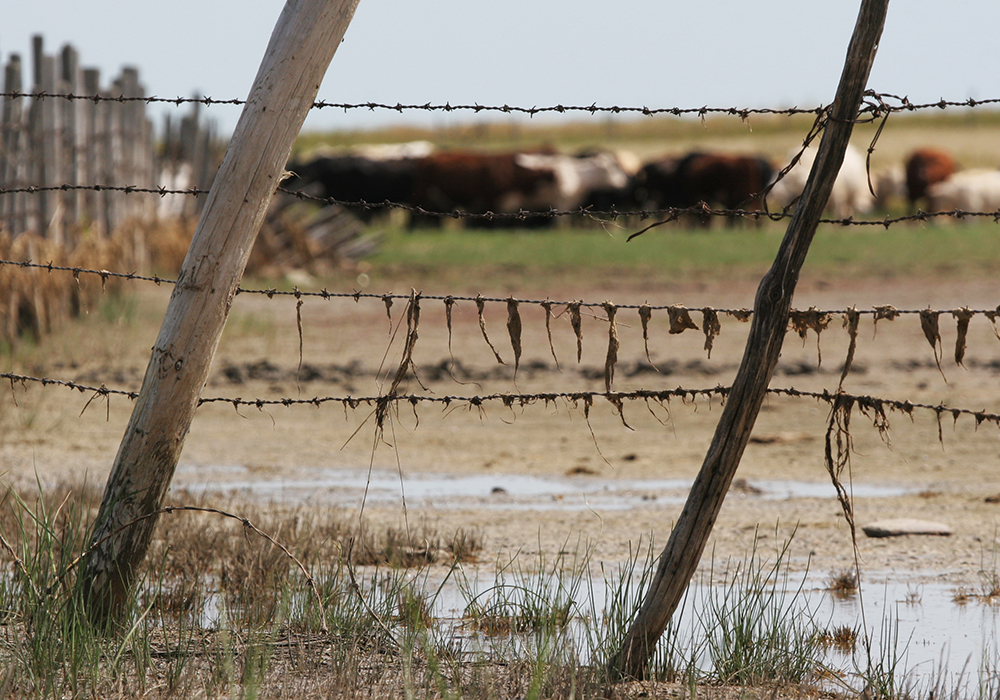Limited snowpack this winter combined with low precipitation in previous years has raised the alarm for severe drought conditions on the Prairies this summer. One of the more serious diseases to arise in these challenging weather conditions is anthrax. Caused by the bacterium Bacillus anthracis, anthrax is an ancient and global disease.
The earliest references include the Book of Exodus in the Bible and the Roman poet Virgil: “The steaming ox falls before the heavy plow. Blood mixed with froth issues from his mouth as he groans his last.”
Read Also

Canada told trade crisis solutions in its hands
Canadians and Canadian exporters need to accept that the old rules of trade are over, and open access to the U.S. market may also be over, says the chief financial correspondent for CTV News.
His description of the clinical disease in cattle remains consistent with modern anthrax, even though we aren’t using oxen for farm labour. Bloody fluid exuding from the fore and rear body openings is a common sign of anthrax.
Anthrax spores are notoriously hardy and can remain viable for centuries. Unlike most other significant animal pathogens, anthrax spores are not inactivated by sunlight, hot or dry conditions, or many modern disinfectants.
The most common scenario for summer anthrax outbreaks is when wet springs are followed by dry, hot summers. A heavy winter snowpack or lots of spring rain can fill rivers, streams, ponds, sloughs and dugouts. The high water erodes soil and releases anthrax spores from the soil into the water.
When the weather turns dry and hot later in summer, evaporating water leaves spores concentrated in what water is left. Spores are also distributed on the soil banks of the previously submerged water body. Animals can ingest or inhale the spores from these highly contaminated environments.
The species most likely to contract anthrax in our region includes cattle, horses, bison, sheep and goats. Anthrax should be a top consideration for the cause of death among animals found dead in the summer months.
Once the spores gain entry into the body, they germinate and proliferate quickly. The main way this bacteria causes disease is through the release of toxins, which cause severe tissue damage and edema that quickly kills the infected animal.
Anthrax doesn’t spread directly between animals and instead requires the infected animal to die. When the carcass is opened, it stimulates spore production and releases them into the environment.
An important consideration of this disease is its ability to infect people. The spores can live on hides and spread to people through inhalation. Woolsorter’s disease is one presentation of anthrax, seen historically in people who processed animal fibre and hides, thereby inadvertently being exposed to anthrax spores. People can also ingest anthrax or develop skin infections.
The name anthrax has its origins in the Greek language, deriving from the term for coal-like, in reference to the blackened appearance of skin infections.
Unlike in Virgil’s time, we now have an effective vaccine. Given the predictions for weather this summer, it would be wise to discuss vaccine options with your veterinarian. Keep in mind that the vaccine needs to be administered at least two weeks before animals may be exposed.
What can we expect regarding this ancient and formidable disease? And ultimately, will climate change make anthrax worse? Researchers could use mathematical models to more precisely estimate the effects of climate change on this and other infectious diseases.
Generally, we can make a few reasonable assumptions. Predictions are that the Prairies will be dryer and more drought-prone in the near future. And one of the hallmarks of climate change is increasingly erratic weather.
These two factors may combine to increase the risk of anthrax in the future. So, when it comes to climate change and anthrax, we’re likely in for it.
Dr. Jamie Rothenburger, DVM, MVetSc, PhD, DACVP, is a veterinarian who practices pathology and is an assistant professor at the University of Calgary’s Faculty of Veterinary Medicine. Twitter: @JRothenburger















